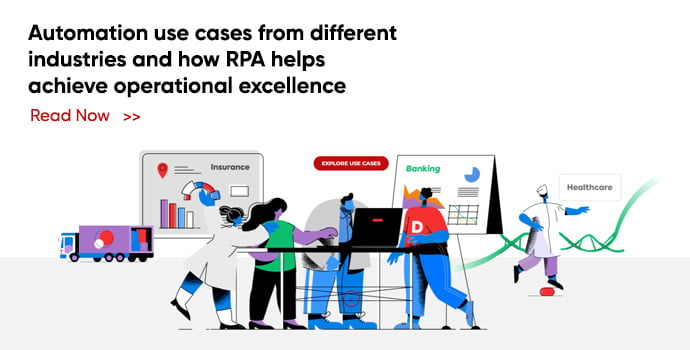Emergency preparedness with RPA solutions during COVID-19 like pandemics
by Rajesh Agarwal, on Mar 30, 2020 3:32:16 PM
Estimated reading time: 3 mins
Recently, we have seen unprecedented situations with virulent propagation of diseases across geographies giving rise to pandemics, such as the COVID-19 outbreak. We have always seen that in such circumstances it is the tough people that last and create precedents. One such area is using technologies such as Robotic Process Automation (RPA) for public health surveillance and emergency preparedness. These RPA solutions connect the medical practitioner and hospital frameworks across the length and breadth to create information network with central governing bodies at the helm.
How does RPA help take tough measures during pandemics?

Most hospitals and medical care institutions have their own Electronic Medical Record (EMR) and Electronic Health Record (EHR) systems. These applications maintain the patient and disease details at macro levels. These systems are usually connected with local diagnostic centres and are synched up periodically.
RPA helps to connect these information silos at a central governing body level and share factual information over the cloud in real-time, of course, by redacting confidential patient information but retaining other useful demographic details. This kind of real-time information synchronization is very useful when rumors are rife and falsely clad information is rampant by word of mouth and across social media.
This kind of central Emergency Preparedness (EP) system powered by RPA helps to effectively deal with emergencies, such as COVID-19 and Ebola like pandemics or long drawn war-like situations, which bring the business-as-usual as we know to a standstill and put extraordinary pressure on the hospitals and government health infrastructure. Availability of the right information helps the authorities to disseminate correct information through the right channels as well as take focused corrective and preventive (CAPA) measures in the right direction.
The business impact of RPA-powered EP systems on the Government and Public infrastructure
EMRs and EHRs are usually bound by the metaphorical fences and are siloed in smaller moohalhas or divisions or territories or states. Their information is usually shared across closed networks of clinics, diagnostics, and hospitals depending upon availability of staff. In short, these process lacunae pose hindrances in generating and sharing the right information at the right time with central authorities. RPA solutions help to bridge such process gaps by auto-updating a central EP system in real-time.
EP systems help central governing bodies to show extra-ordinary preparedness to deal with emergencies and help people. The show stoppers can be in any form – droplet infections, particle infection pandemics, virulent outbreaks, nuclear disasters, natural & man-made disasters, exposure to high degree of electromagnetic radiation emanated by towers, etc., that cause wide-spread harm to spiral upward with each passing day.
EP systems powered by RPA deployed in a top-down approach across the medical institutions in the nooks and carries and by-lanes with a bottom-up real-time update right up to the central governing body at the national level offers quick snapshots to authorities. It allows them to quickly deploy resources in the form of medicines, medic-aid personnel, and security forces at the epicenters at top speed thus limiting the widespread damage.
Artificial Intelligence (AI) algorithm layers implemented with RPA also help to quickly come up with patterns and trends at a central level by analyzing the big data generated across different parameters. These criteria could be less virulence or high virulence of a particular pathogen across different geographies, the reasons for this kind of difference, predecessors to full-blown symptoms, incapacitation or resistance to a particular drug, immune system and anti-body response across demographics, different modes of transmission of the antigens, record of people who are fully recovered to help isolate antibodies and collect plasma for transfusion across the vulnerable demographics, etc.
This kind of right information at the right time helps authorities to adopt quick measures to break the chain of the wildfire like propagation of antigens and take holistic measures across demographics related to age, gender, and socio-economic conditions.
Remote assistance offered by RPA and continuous learning through AI layers
RPA helps in fast transfer of data across siloed systems in a pre-programmed manner. With improving intelligence, these programs can be re-programmed, deployed, and monitored through remote operations away from the epicenters of disasters.
AI layers coupled with Advanced Analytics and workflows help in quick decision making. The continuous learning undertaken by the algorithms based on the exception handling helps the EP system to automatically raise flags to quickly route resources – disinfectant chemicals, medicines, respiratory ventilators, etc.
RPA use cases - Be prepared to handle emergencies
In summary
Emergency preparedness offered by the RPA and AI powered EP systems helps to gather information and centrally maintain records in real-time. The AI algorithm layers enable auto-analysis and continuous learning across the big data that is generated. This dual preparedness helps authorities not only with public health surveillance but also in taking timely CAPA measures to break the chain of ravaging pandemics.


















